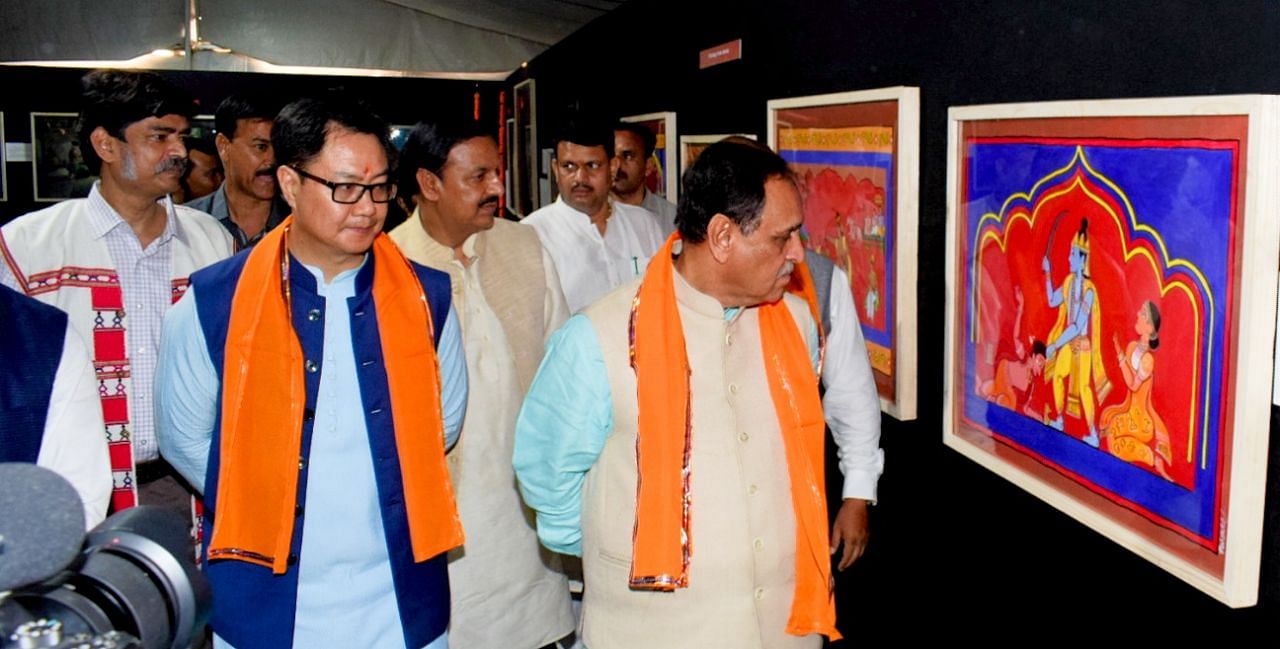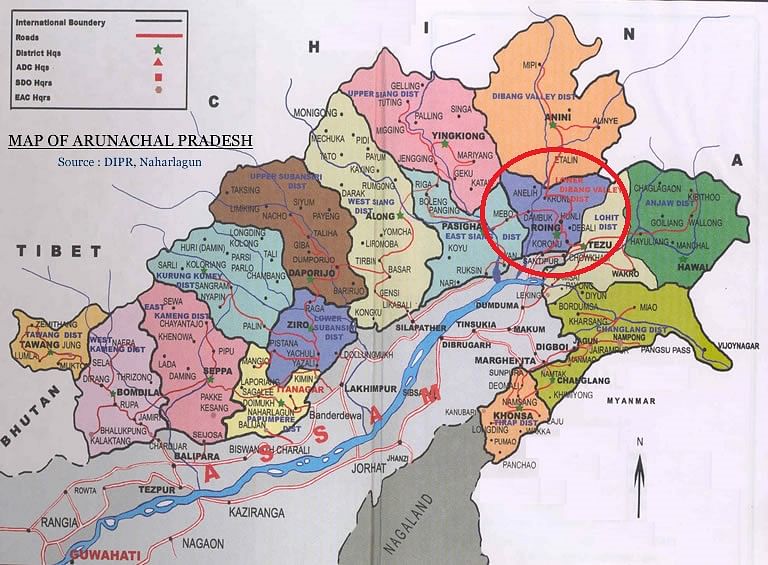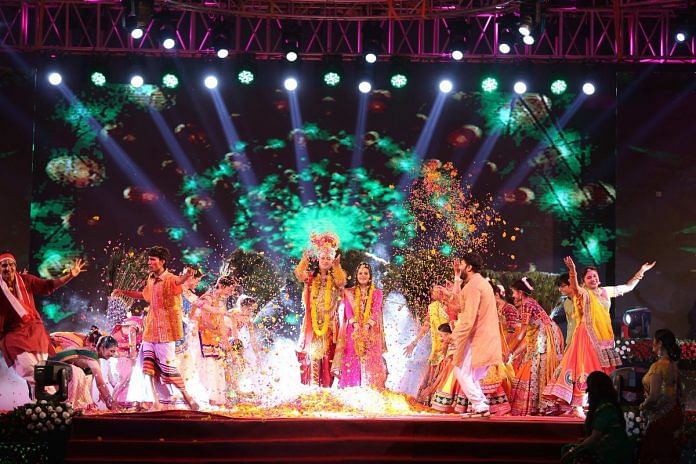The event was attended by CMs of 4 NE states; culture ministry says it’s part of Modi’s ‘Ek Bharat, Shreshtha Bharat’ scheme.
New Delhi: Gujarat’s famous Madhavpur Mela, which celebrates the sacred union of Lord Krishna and Rukmini every year, has a northeast connection. According to the ministry of culture, the organiser of the four-day event that concludes Wednesday, Krishna’s consort belongs to the Idu Mishmi tribe of Arunachal Pradesh, a claim that has been questioned by many experts.
The fair being held at Madhavpur Ghed, a village located 59 km from Porbandar, was attended by the chief ministers of Assam, Arunachal Pradesh, Manipur and Tripura to highlight what is being projected as the ‘historical’ connection between the northeast and PM Modi’s home state.
A troupe of 150 performing artistes from the northeast also took part in the event. Culture minister Mahesh Sharma said this was meant to facilitate ‘national integration’ and to bring the northeast closer to other parts of the country under the banner of Prime Minister’s ‘Ek Bharat, Shreshtha Bharat’ scheme.
https://twitter.com/CMO_Gujarat/status/978590073112399878
Who are the Mishmis and what the legend says
Of the 25 indigenous tribes in Arunachal, the Mishmis comprise three sub-tribes — Idus, Digaros and Mijus. They mostly live in Dibang Valley district, Lower Dibang Valley, Lohit, East Siang and Upper Siang. The Idu Mishmis roughly constitute 1.3 per cent of the state’s tribal population.
The legend has it that Krishna heroically kidnapped her and took her to Dwarka (Gujarat) to prevent an unwanted marriage.
Some believe Rukmini was from Bhismakanagar, a mythological site situated 30 km from Roing in the Lower Dibang Valley, where ruins of a hill fort dating back to the 12th century were first excavated by the Archaeological Survey of India between 1969 and 73. The fort is believed to be the kingdom of Bhismaka, the ruler of Vidarbha (Maharashtra), who built it in 8th century BC before the rulers of the Chutia dynasty (pronounced ‘Sutia’) took over.
The Bridal Team from Arunachal Pradesh left for Madhavpur-Ghed in Gujarat to commemorate Lord Krishna’s marriage with Princess Rukmini who was from Idu Mishmi Tribe of Arunachal Pradesh. A testifying to links between North-East with the rest of the Country. pic.twitter.com/Mcf2nKrwuC
— Kiren Rijiju (@KirenRijiju) March 26, 2018
Although the Idus are said to have originated from the Tibetan highlands, anthropologist Sarit Kumar Chowdhury said that they strongly believe that Rukmini was part of the Mishmi society.
“Digaros and Mijus have nothing to do with this legend. The location of Bhismakanagar in the Mishmi belt substantiates their claim”, he told ThePrint. Prior to working in the Indira Gandhi Rashtra Manav Sangrahalaya in Bhopal, Chowdhury spent 20 years studying the indigenous tribes of Arunachal since 1995.
Chowdhury’s museum made an exhibition of paintings depicting Rukmini’s journey at the Madhavpur mela.

Claims and counter-claims
While the Guwahati Circle of ASI traces the ancestry of the Chutia dynasty to Bhismaka, the Arunachal Tourism website claims the association between Rukmini and the Idu Mishmi tribe is based on “popular legends and traditions” and references to Bhismaknagar in Mahabharata and Bhagvad Gita.
Salam Sam Singh, an archaeologist with the Guwahati Circle of ASI, said that while he respects the local legend, there’s little archaeological evidence to the Bhismaka folklore. “We excavated brick structures and gateways facing east and west but we cannot archaeologically establish they date back to the Bhismaka dynasty,” he told ThePrint.
Chowdhury also said that it’s difficult to archaeologically periodise oral narratives, which form the bulk of indigenous tribal history in Arunachal. “This legend is adjacent to Assam, wherein performance of ‘Rukmini Haran’ (kidnapping of Rukmini). These oral narratives are not bound by political boundaries”, he said.
However, he agreed that rigorous research was required to understand when and where the idea generated.

An Aruanchal Times report quoting Dr Rasto Mena, public relations secretary of the Idu Mishmi Cultural and Literary Society (IMCLS), said the story that links Rukmini to the Idu-Mishmis is believed to have stemmed only some three to four decades back.
“Some like to celebrate the association of Rukmini to the tribe, while some question this very association. There are others that completely deny the whole association,” Mena was quoted to have said by the daily.
“However, such initiatives of the government, if for strengthening cultural ties and promoting cultural integration, should be welcomed with open arms,” he added.



